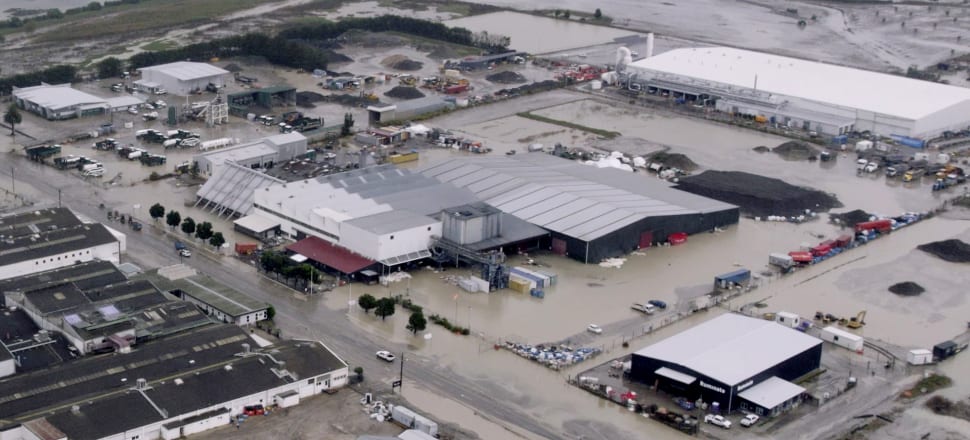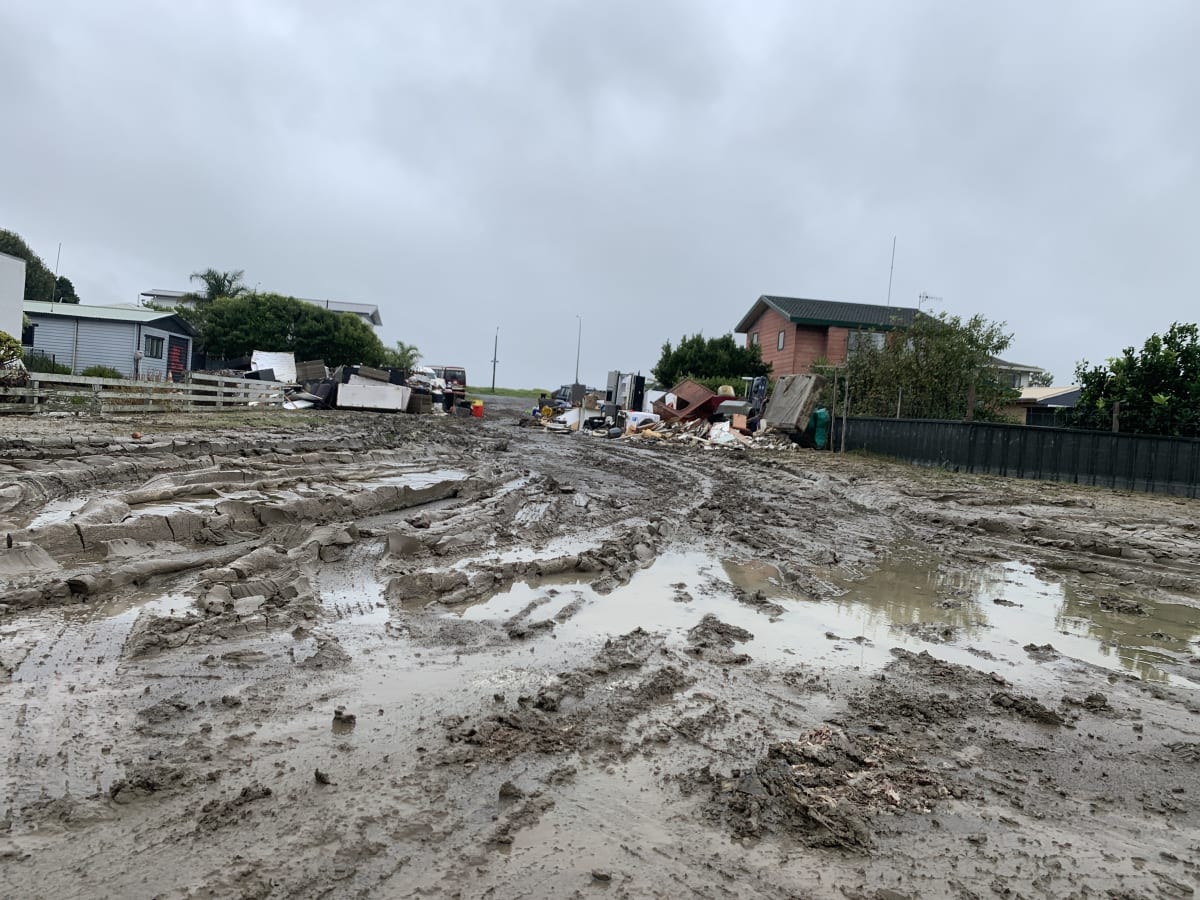
Highly toxic and hazardous contaminants have been found in a cyclone-hit region in Hawkes Bay, posing a significant health threat. Bonnie Sumner reports.
Newsroom can confirm a cocktail of toxic chemicals and contaminants have been found in sample testing taken from the Awatoto region, with the Napier City Council warning of the possibility of “significant risk to health and property”.
The council sent Newsroom a list of the contaminants that were found in the samples, which includes acids, significant biological hazards, high ammonia pockets, hydrocarbons, gases, sulfuric dioxide, insecticides and pesticides.
Newsroom is awaiting the details of the concentrations of the substances.
Cordons were put in place on February 21, but on Saturday morning a 24/7 controlled cordon at entrances to the area were set up, staffed by security guards wearing full PPE.
Only businesses within the cordon can now enter the area to carry out “critical actions and tasks” and they must also wear Personal Protection Equipment (PPE) and have identification.
*Drone footage of within the cordon*
On Tuesday the security guards began handing out sheets of paper from the council to those entering the cordon titled ‘Awatoto entry disclaimer’.
The notice goes on to say “By entering the Awatoto cordoned area, I acknowledge the presence of numerous health & safety hazards.”
It lists the same contaminants the council sent to Newsroom, and adds at the end “plus more”.
It also includes a list of possible symptoms as being gastroenteritis, dermatitis, burns, blisters, coughing, irritated eyes and blacking out, and adds “chronic accumulation of chemicals can cause significant health risk”.
Of particular concern is the final sentence, which states “There is a possibility of isolated pockets reacting if they come into contact with each other, causing significant risk to health and property.”
There are 20 businesses in the Awatoto area, many of which deal with potentially dangerous substances.

The largest of these is the Ravensdown fertiliser plant, which in 2018 caused the adjacent highway to be closed due to a corrosive acid spill – a byproduct of superphosphate manufacturing.
Also in the zone is a wastewater treatment plant, which suffered a raw sewage spill a week after the cyclone causing the area to be temporality evacuated, and Hawkes Bay Protein, an animal waste products rendering plant, which was fined in 2021 for discharging offensive smells.
Many other businesses are also badly affected, including pet food manufacturer Ziwi, the Awatoto Golf Course, BioRich, a composting and green waste management plant, and carpet company Bremworth’s largest factory in the country.
Five days ago, Newsroom donned full PPE gear to visit one of the businesses in the affected area. The owner has been working every day he could to clear the area of the mud and silt that has covered everything, including his plant nursery, staff room and storage shipping containers.
In the first few days following the flooding he could only access the site by kayak. Now it’s a matter of removing the thick sludge that is slowly drying to a fine dust.
At the time we visited, he didn’t know what was in the sludge. “We’re being pretty careful. You can see the oil and you can smell it.”

But on multiple occasions over the three weeks since the cyclone, Newsroom has observed numerous people in the area without PPE or face masks.
The contamination is causing concern for locals bordering the cordon.
In a tour of some of the flood-affected orchards in neighbouring Meeanee early last week, local grower Brendan told Napier’s mayor Kirsten Wise they were worried about trying to clean up their orchards of silt due to contamination fears.
“We’ve got health and safety issues because we don’t know what was in the water so we can’t send staff in there.”
When asked whether the testing being undertaken at Awatoto would apply to the land around Meeanee, Wise said the water tested would be similar.
“The water that we are testing [in Awatoto] will be the same water or similar water to what’s come through here, so when we get the results for that we’ll be able to come back to you guys [the local growers] and let you know.”
“We’ve only been doing testing at this stage in Awatoto where we’ve got the wastewater treatment plant and a number of industries that are using quite potent toxins and chemicals, so that’s the only area they’ve identified as a potential public health risk. But I’ll be going back today and feeding what I’ve seen here into the team as well and if they think there needs to be some testing done further along then certainly that will be done.”
Newsroom approached the council to ask whether testing in neighbouring areas was being conducted and if so when it was expected back. A spokesperson replied: “No, no testing elsewhere.”







